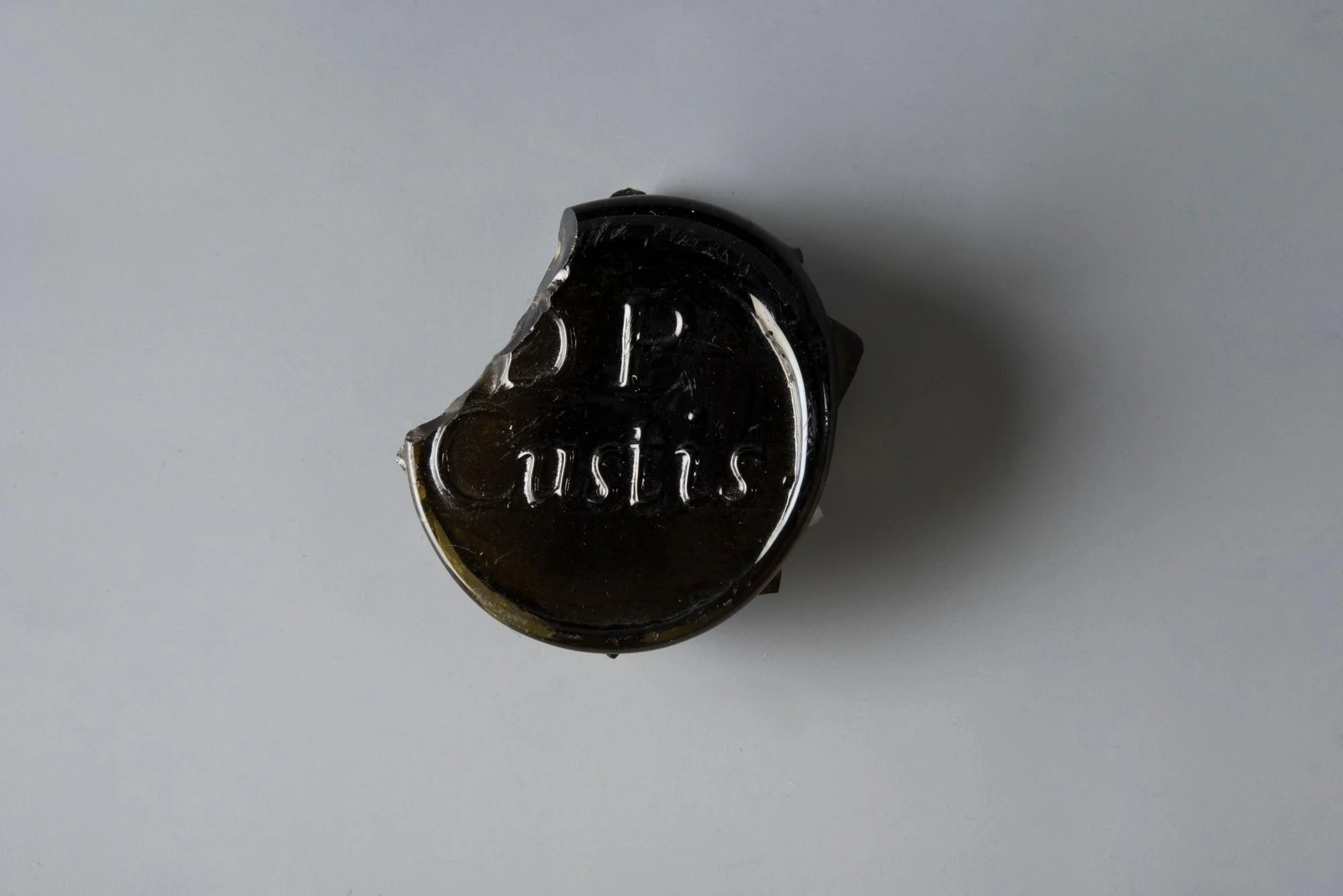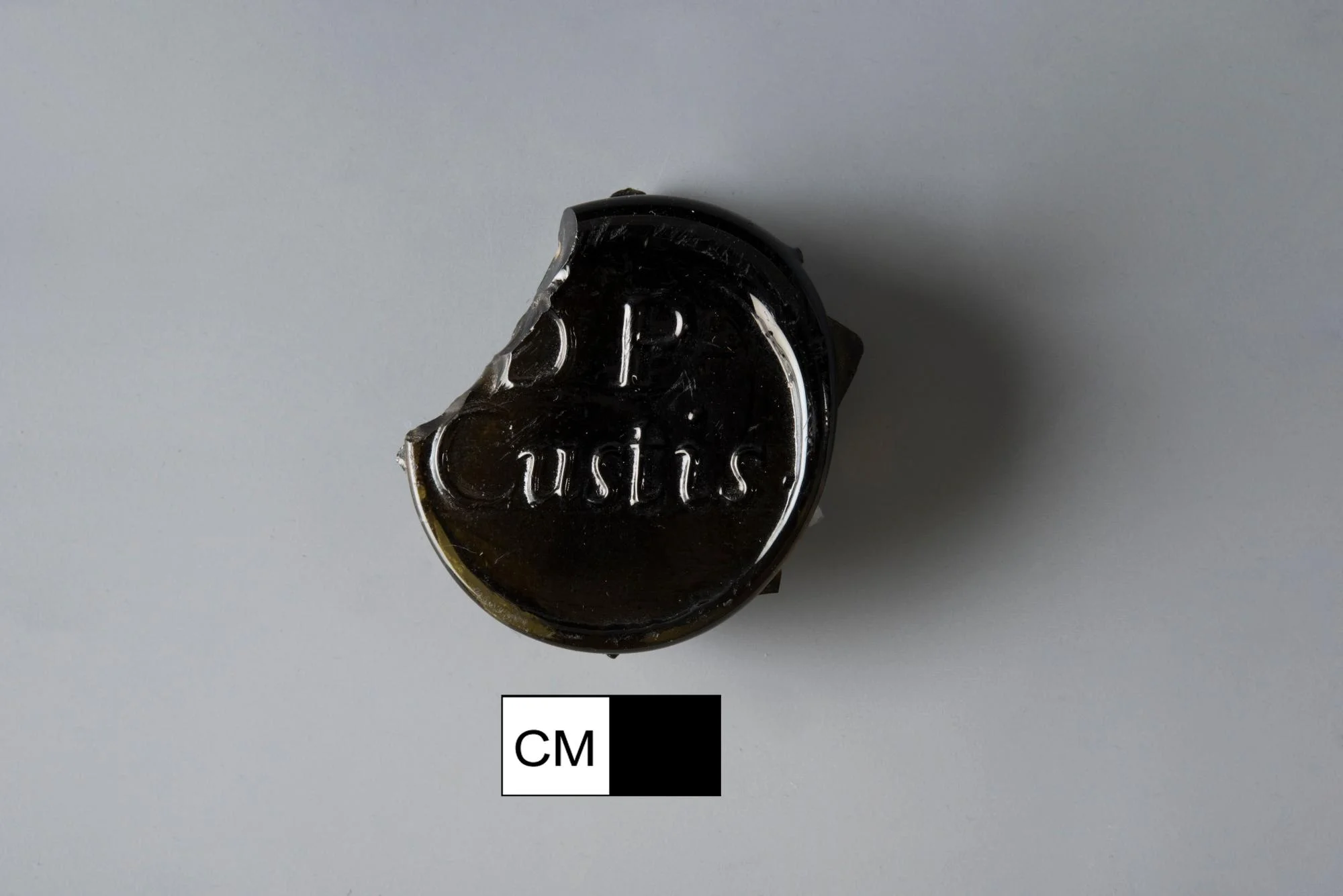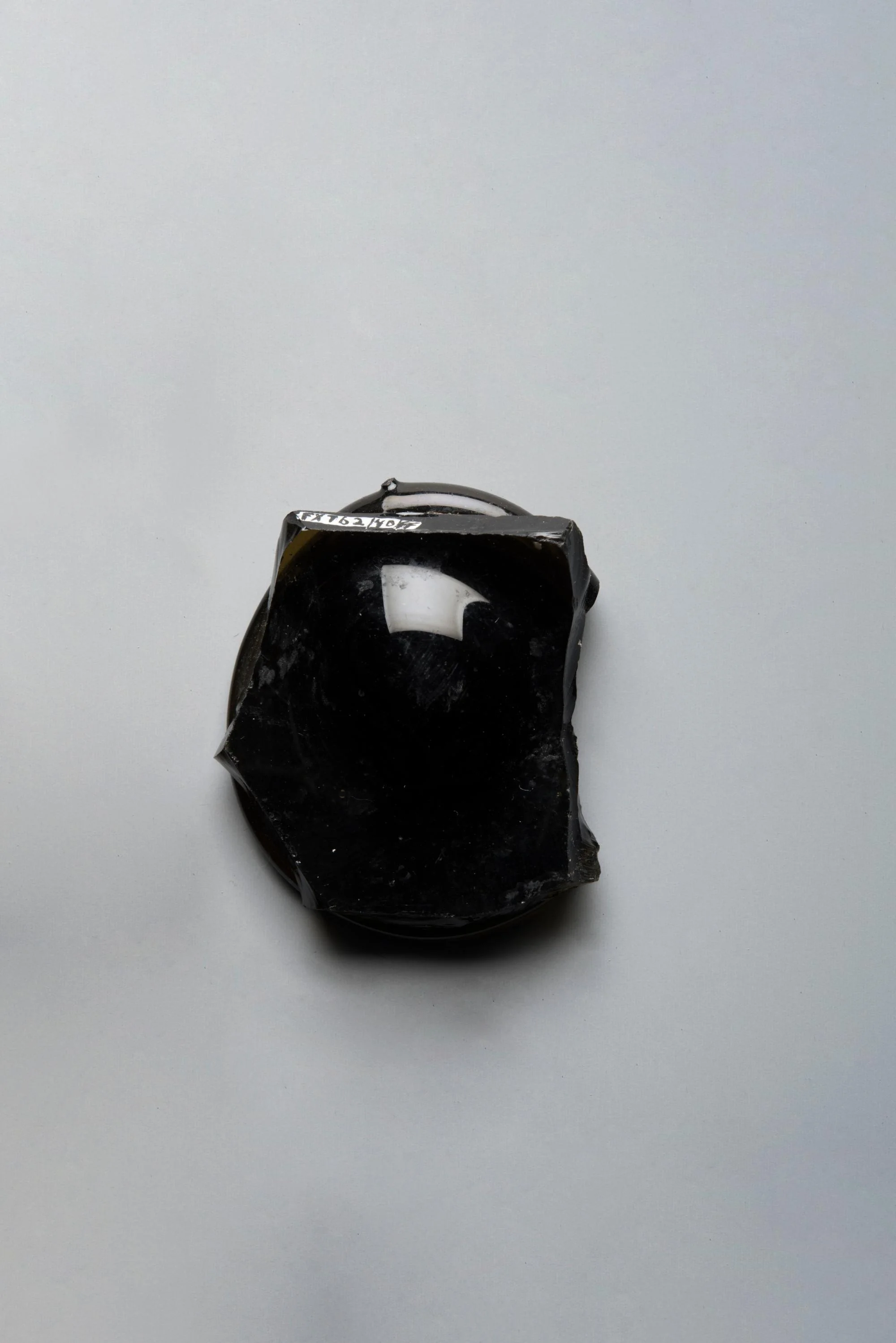Notes
This fragment is a wine bottle seal, bearing the initials of DP Custis. Wine bottles such as this were primarily imported from Britain and Europe in the eighteenth century, and were commonly used to consume cider, beer, wine or liquors in colonial households of all statuses. Seals such as these were formed by affixing a glass disc onto the body of wine bottle. This disc was impressed with a commissioned stamp often bearing lettering and/or symbols to form initials, names or crests. Such seals were signs of gentility, wealth and individuality among the planter class from the 17th through the 18th century. As custom items as well these would not have been available for purchase in local American markets, instead potentially passing as gifts or legacies among the planter class.
It is likely in this fashion that the DP Custis seal ended up at Mount Vernon. Daniel Parke Custis was Martha Washington’s first husband who died in the year 1757. Dying without a will, Martha was entitled a dower share of one third of Daniel’s estate for her lifetime. This included wealth and physical property. The reality of plantation society in the eighteenth century is that among the dower, and listed as property, were eighty-four enslaved men, women, and children, many of whom came to Mount Vernon with Martha after her marriage to George Washington.
Object Type
Has it Been Conserved?
Yes
Where Was It Found?
Project Site: House for Families [more details]
Material
Vessel
Manufacturing Technology
Form
Completeness
Decorative Technology
Date
Post-1712
Country of Origin
Dimensions
40.44mm x 11.47mm x 42.81mm (W x H x L)
Illustration shows object in comparison to the size of a quarter
Weight
19.2 gram(s)
Object Number
1840926
DAACS Number
1840926
Project: House for Families
The structure identified as the “House for Families” on the 1787 Vaughan plan likely housed the majority of the enslaved population living at the Mansion House Farm for much of the second half of the eighteenth century. The building was in existence from circa 1760 until it was demolished in late 1792 or early 1793. The archaeological evidence for the structure consisted of a brick-lined storage cellar (44FX762/40-47) measuring roughly six feet by six feet. Historically the cellar served as a handy trash receptacle once it ceased to be used for its original storage function, and through extensive excavation has yielded an extremely rich assemblage of household refuse. The analysis of these remains offers the opportunity to study important aspects of the daily lives of Mount Vernon's enslaved community.
See All Objects From this Dig


 Glass
Glass